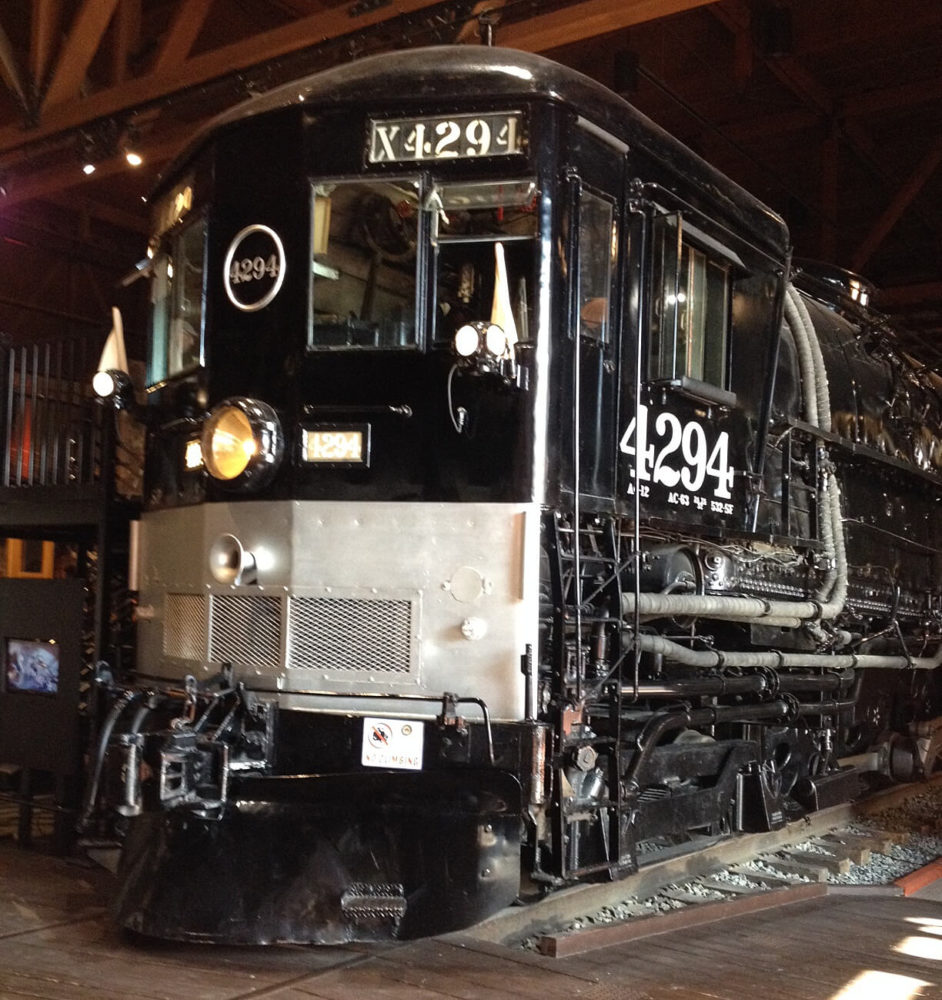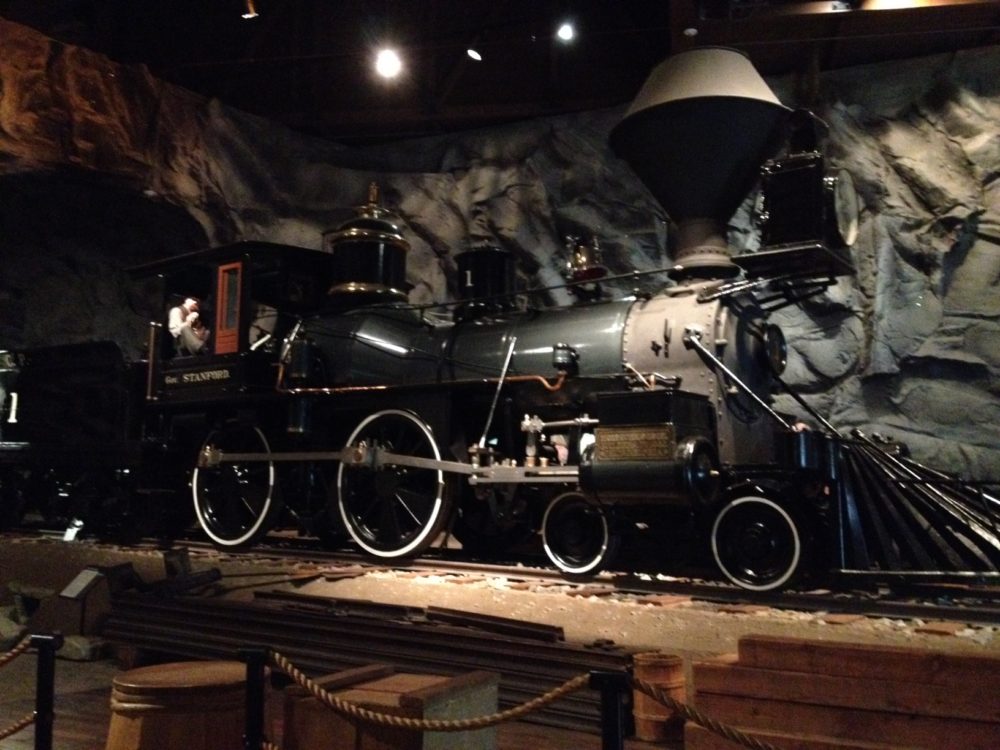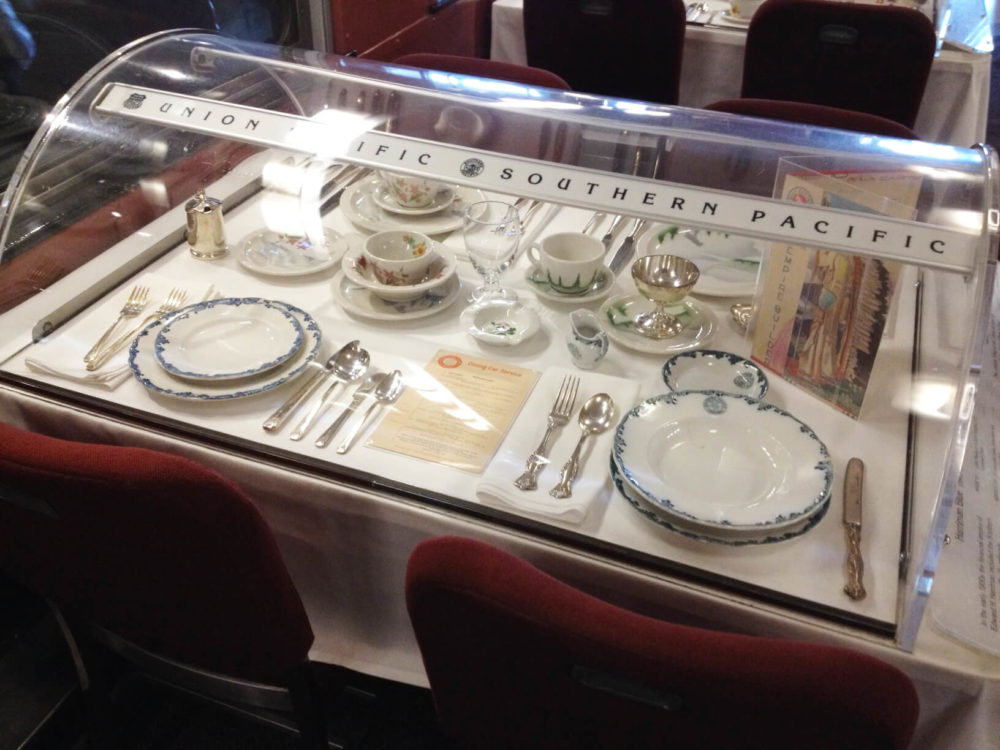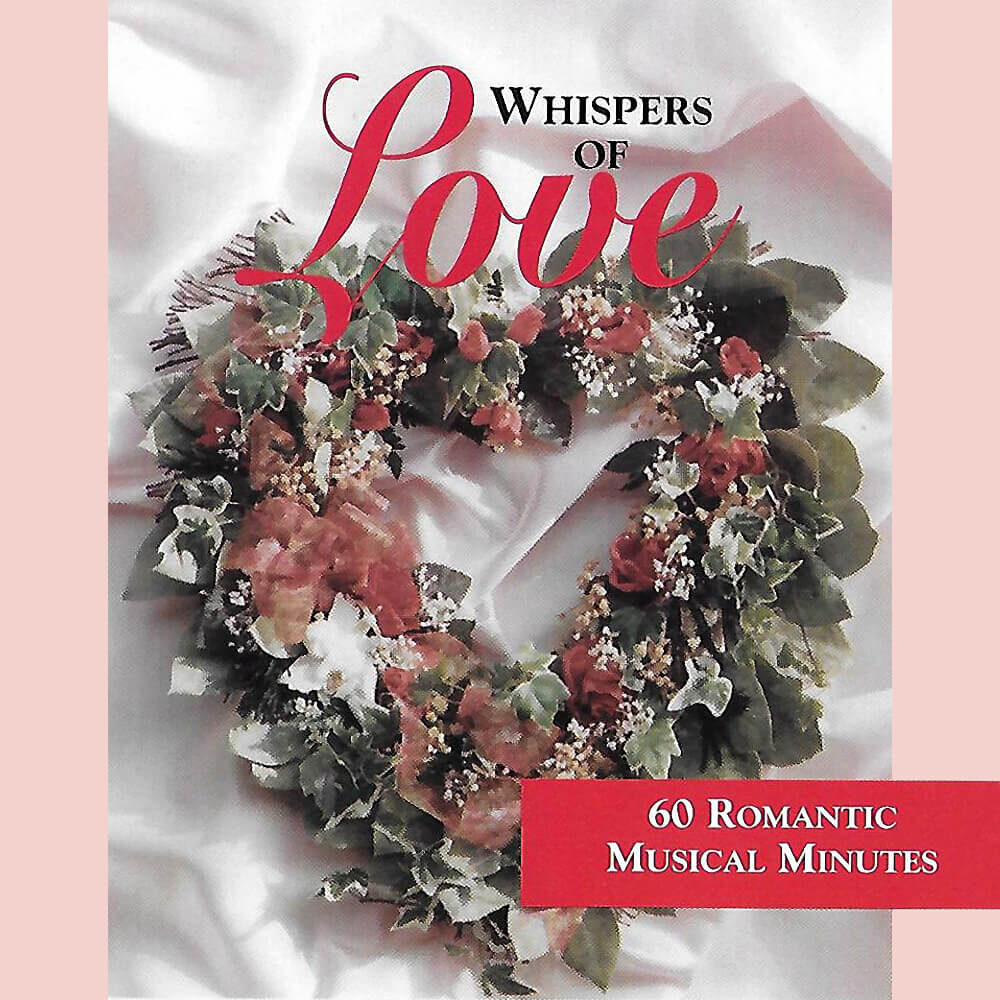During my November trip to the west coast of the United States, I was finally able to visit this building, the California Rail Museum, located in downtown Sacramento.
Once entering the building, it isn’t long before you encounter what I consider one of the stars of the museum, the locomotive pictured here. No, it is not an early model diesel engine … it’s a steam locomotive known as a “cab forward.” The first of these specially designed units was put into service by the Southern Pacific Railroad in 1910 for use on their line traversing the Sierra Nevada Mountains of northern California to Portland, Oregon. Because of the terrain plus the heavy amounts of snowfall each winter, the route has miles and miles of tunnels and snow sheds.

The issue? These extended “closed spaces” caused the exhaust fumes from the smoke stacks to be funneled back into the crew cab of standard locomotives. Hence, turn the locomotive around, placing the crew ahead of the fumes. Normally, the fireman would still need to be at the back to feed coal to the firebox … but this was not necessary, as these locomotives burned fuel oil rather than coal. Several different models of this design were built over the next several decades and the last one was replaced by diesels in 1956.
These two Museum exhibits celebrate the building of the transcontinental railroad … first with the Chinese and Irish crews of the Central Pacific Railroad laying a record-setting 10 miles of tracks, bring them within a few short miles of where the final spike would be driven just days later on May 10th, 1969, finally connecting California and Sacramento, where the Museum sits, with the rest of the nation.
These are just three of the Museum’s collection of historic locomotives which were on display when I visited.
First, the Union Pacific 4466 is an 0-6-0, built in 1920 by the Lima Locomotive Works of Lima, Ohio.
Next is Central Pacific Railroad’s # 1, the Gov. Stanford – built in Philadelphia in 1862 by the Baldwin Locomotive Works, then disassembled and loaded in pieces on a sailing ship for transport to California.
Lastly, North Pacific Coast 12 Sonoma, a Baldwin 4-4-0 engine built in 1876.
Please know the California Railroad Museum isn’t just about locomotives — there’s a large model railroad layout and other exhibits related to the history and various aspects of the railroad industry. And you’ll find several real-life cars on display including this reefer, or refrigerated box car,

plus several passenger cars and a very interesting RPO — railway post office — car … most open for you to wander through.
Also, there are a number of cabinets displaying the tableware used in the dining cars of several of the major railroads during the heyday of luxury rail travel.
And, finally, our host for the day, Ron Hare, pointed out old Santa Fe # 1010 and briefly shared the significance of this 2-6-2 locomotive … that it’s the only one that’s been preserved of the 19 locomotives which played a role in the Scott Special, a one-time, record-breaking Atchison, Topeka and Santa Fe passenger train which operated from Los Angeles to Chicago.

The trip was made in July of 1905 at the request of Walter E. Scott, who was known as Death Valley Scotty — who I’d describe as a big-time promoter and small-time con artist — traveling the 2,265 rail miles between the two cities in 44 hours and 54 minutes, beating previous records by several hours.
How was this accomplished? Note that I mentioned 19 different locomotives … which is not the norm, either then or now, for pulling passenger or freight trains. First, other than the locomotive, the train consisted of just three passenger cars carrying only four passengers, including Mr. Scott and his wife … making it a very simple train to deal with.
Then, if you are familiar with steam locomotives … they require lots of care and frequent stops for the tender to be refilled with coal and water — a function which consumes time. Consider this being carried out 18 times during the long trip, a loss of several hours.
Hence, the reason 19 different locomotives were used … very shrewd thinking. It was calculated as to when and where each locomotive would need servicing. At that point, the next locomotive would be standing by, fully fueled with engineer and fireman on board. In each case, when the train arrived, the loco would quickly be cut off and the fresh one backed into place and coupled up … and off they’d go in just a few short minutes!
Just like a human track relay race, it’s not just the speed of the runners, it is also how smoothly the hand-off goes. Was this a fair way to set a new speed record? That can be debated. In all areas of life, the factor of winning comes into play at some point … and that is usually accomplished by using what we’d call guerrilla tactics! As you’ve read, they were used very effectively for the Scott Special.
I find guerrilla tactics such an interesting subject, I think I’ll write about it on this page one day. To read the entire Scott Special story in detail.
And, that’s a short tour of the California State Railroad Museum!
Next time here on Marlin’s Musings … it’s a bit of radio history you may not be familiar with … I wasn’t until a friend sent me some photos.
Image Credits: Courtesy of 39th National Narrow Gauge Convention.











Hi Marlin,
What an interesting tour of this museum. I had never seen a cab-forward steam engine before. Wasn't even aware anything like that was ever made.
I did learn a few years ago that some steam locomotives out west ran on fuel oil rather than coal.
Hope you are well.
Dick
Thank you, Dick … always appreciate comments!
If I may point out one minor error.
Southern Pacific’s crossing of the Sierra Nevada ties together Sacramento/Roseville, California and Reno/Sparks, Nevada.
The routes between Sacramento, California and Portland, Oregon crossed two mountain ranges: the Siskiyou’s and Cascade’s.
The original line across the Siskiyou’s became a secondary SP line when the Natron Cutoff (effectively between Weed, California and Eugene, Oregon) was opened in 1926.
I like your website!